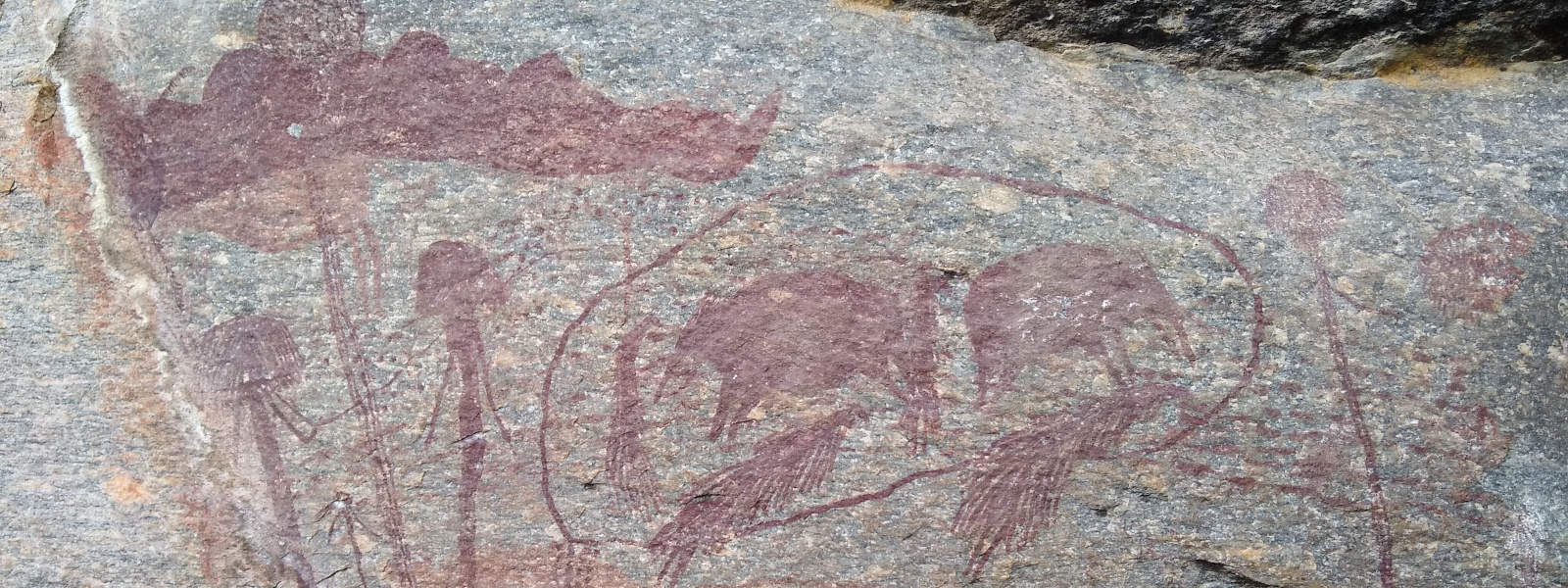The rock paintings of Kondoa Irangi

History of the rock paintings of Kondoa Irangi
Kolo is a small village along the ‘highway from Arusha to Dodoma (Capital of Tanzania). It takes about 3 hours to get to Kolo from Arusha by 4 wheel drive (224km) and another 3 hours to get from Kolo to Dodoma (180km). The district of Kondoa, especially around the tiny village of Kolo, lies at the centre of one of the most impressive collections of ancient rock art on the African continent. There are approximately 1,500 rock painting sites and found primarily in granite and gneiss rockshelters. The majority of these sites have rock paintings, with only two exceptions having been reported: rock engraving sites to the west of Kondoa at Usandawe. Common painted motifs are animals, human, and various geometric designs.
These rock painting sites do not only contain rock paintings but also have a rich archaeological record dating from the Middle Stone Age (MSA) right up to the Iron Age (Masao 1979; Kessy 2005). Some of the rockshelters, notably theMongomi wa Kolo shelter and its surrounding environments, are also connected to living heritage. This site and its landscape have been used by local people, the Warangi and Waasi, for traditional ritual ceremonies (Leakey 1983; Chalcraff 2005; Bwasiri 2011).
Mary Leakey began documenting these rock paintings in the 1950s and when she was done, the conclusion are that these were the second most extensive rock painting sites in Africa next to Tassili N’Ajjer in Algeria. There is now a small museum in Kolo right at the only junction in town. It has a couple of rooms with some stone tools and artifacts and pictures of some of the the rock paintings.
It seems likely that the images were originally the work of the hunter-gatherer Bushmanoid tribes, who have an ancestral history of rock art, and some Sandawe clans claim that their ancestors were responsible for the paintings. But as the collection varies so greatly in age and style, it might be that later Bantu-speaking peoples added their own handiwork to the older images. It is estimated that many of them are between 200 and 4,000 years old and the research carried out by Mary Leakey in the 1960s identified nine different styles that may relate to different eras and artists. Some of the work is black and white and some in varying orange- and brown-tinted ochres, and many of the older images have faded and suffered through the course of time, while others have been painted over by successive generations.
Many of the images could have inspired Lowry in his famous stick men paintings thousands of years later; while some are simple images, others depict oddly moving scenes, such as a group of two masked men abducting a female, while two other men try to hold her back. Others show local animals, such as giraffe and hunting scenes with antelope racing away. There are also images of people playing musical instruments and those that seem to anticipate some kind of abstract expressionism.
Some of the paintings are quite easily accessible, following a quarter-mile walk across fields, and some a bit harder to get to, requiring a rocky climb. Typically the most interesting and worthwhile paintings in the series are the most difficult to reach, but at least these are slightly better protected from the recent vandalism and graffiti and the weathering that has been the sad fate of many of them.